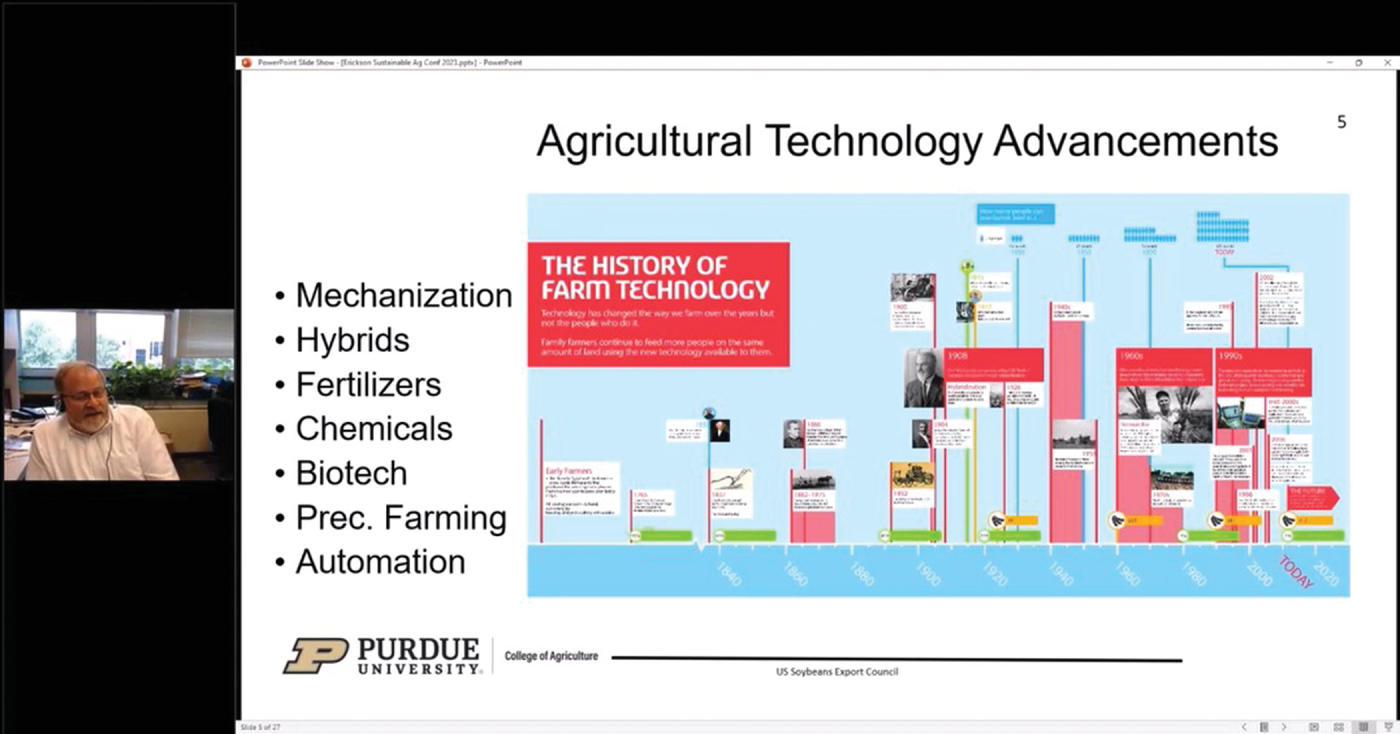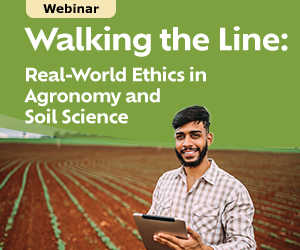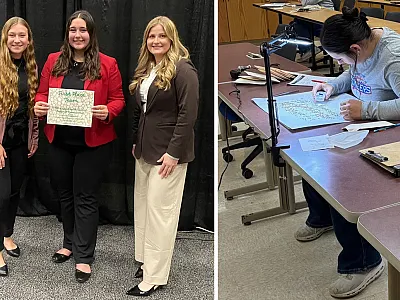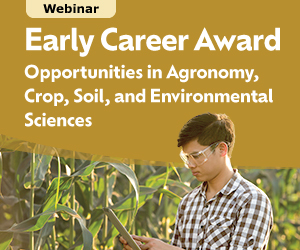From Knowledge to Action: 2023 Sustainable Agronomy Conference

“Sustainability is just a concept until it’s applied on our farms,” says Jim Cudahy, CEO of the American Society of Agronomy, Crop Science Society of America, and Soil Science Society of America. “The Sustainable Agronomy Conference takes the latest science and connects it to its literal application in the U.S. and around the world.”
This year, the Sustainable Agronomy Conference (SAC), now in its sixth year, did a fantastic job connecting sustainable agronomy with those who apply it, drawing 3,020 registrants from 93 different countries. The lineup of speakers spanned agricultural researchers, industry leaders, and agricultural consultants. Certified Crop Advisers (CCAs) and Certified Professional Soil Scientists (CPSS’s) who registered for the free, online conference garnered opportunities to earn up to 8 CEUs.
Over four days of sessions, attendees heard about innovations across the agricultural value chain, from nutrient management to groundbreaking precision agriculture techniques using unmanned aerial vehicles (UAVs) and artificial intelligence (AI), to soil microbial measurement and updates in the carbon and ecosystem service market space.
Read on for the highlights from the four different virtual sessions that were presented in July and August.
Utilizing AI and UAVs for Sustainable Crop Management
Digital agriculture—or smart farming—has helped farmers collect, store, and analyze digital data. With these tools (which have been around for several decades), farmers can precisely apply nutrients, fertilizers, seeds, or pesticides. But many small farms don’t use these customizable, variable technologies to smartly apply inputs on their fields. Bruce Erickson, Agronomy Education Distance & Outreach Coordinator at Purdue University, explores in this session what past adoption can tell us about future advancements in AI and UAVs.
Likewise, the third wave of precision agriculture seeks to “farm the data” as much as we “farm the land.” Raj Khosla, Professor of Precision Agriculture and Head of the Department of Agronomy at Kansas State University, details the role AI and the “internet of things” can play in enhancing how we use big data to parse variability in crop and soil properties as well as analyzing datasets that are based on location to help make highly accurate agronomic decisions.
Artificial Intelligence (AI) is popping up everywhere you look, from virtual assistants to chat apps that talk like a search engine possessed your favorite classic author. But what can AI do for agriculture?
Erickson explains in his session when we can expect to see new innovations like variable‐rate technology for fertilizer, seed, and pesticide application adopted on more farms, especially small and specialty farms. He tells us how adoption patterns from the past can help us predict adoption of new technology in the future.
Now, AI can help farmers harness the power of data on the farm to make more informed, evidence‐based decisions to “farm the data” as well as “farm the land.” Khosla grapples with the role of big data and AI in understanding the variability in crop and soil properties to make better decisions on the farm.
Preserving Pest Management Options through IPM Principles
It’s a recurring theme in this year’s SAC: gather lessons learned in the past, and apply them to the future. In this session, Bryan Ulmer, Global Technical Lead—Value Chain at Syngenta outlines integrated pest management (IPM) principles that can help us keep pest management tools available. What does that mean? Overuse of some pest management tools can mean pests become resistant, rendering those tools useless—think glyphosate‐resistant Palmer amaranth. With judicious use of existing techniques, we can better manage pests while keeping our options open as new techniques are developed.
Likewise, IPM could be key to creating resilience in U.S. agriculture and fostering climate benefits. Using IPM principles could reduce agricultural emissions and aid in soil carbon sequestration. Thomas Green, founder of the IPM Institute, discusses all of the ways that IPM could help capture carbon credits and climate benefits on your own—or your producers’—operations.
Building Sustainable Management through the 4R Principles
It’s not an agronomy conference if we don’t talk about the 4Rs, is it? Remember: Right source, right rate, right time, and right place.
Nutrients are one of the greatest on‐farm input costs, and finding ways to reap maximum yields while minimizing nutrient inputs is an excellent way for farmers to reduce their expenses. Enhanced‐efficiency fertilizers (EEFs) can improve nutrient uptake while minimizing inputs, but they require advisers to think of the whole nutrient ecosystem. Likewise, they have a bit of a learning curve compared with traditional nutrient application, so there are some challenges to adoption and prevention of unintended consequences for EEF use. Karl Wyant, Director of Agronomy at Nutrien, walks through EEF technology and uses. After his presentation, Leif Fixen and Shamitha Keerthi of The Nature Conservancy describe how to put EEFs into practice.
That covers the source and rate, but what about the time and place? The second half of this session discusses precision nutrient management for precise phosphate recommendations to improve more sustainable and profitable yields. Craig Dick, VP of Sales and Marketing at Phospholutions, and Chad Penn, a USDA‐ARS soil scientist, talk through ways to develop precise phosphate recommendations.
Likewise, using zone tillage can help improve fertilizer application and placement to improve both profitability and sustainability. Zone tillage—also called strip tillage—joins the benefits of both conventional and no‐till environments by selectively cultivating strips of a field to improve compaction and decrease costs compared with conventional tillage. Sean Arthur of Environmental Tillage Solutions talks through ways to improve fertilizer application and placement with zone tillage for better profitability and sustainability.
Decoding the Basics of Carbon and Ecosystem Service Markets for Short‐ and Long‐Term Success
Carbon markets come with a whole slew of new considerations for farmers, including data concerns, signing new contracts, understanding agreements on leased land—not to mention new practice changes on the farm. As advisers, knowing the ins and outs of carbon contracts, environmental assets, and measuring, monitoring, reporting, and verification (MMRV) can give you and your clients a leg up.
The final session delivers insightful expertise from those working in the carbon and ecosystem service market space. Researchers discuss climate‐smart agriculture and the economics of cover crops and no‐till practices farmers must adopt to participate in carbon programs. Other researchers look beyond carbon to nitrogen management, another key source of agricultural greenhouse gas. Finally, industry experts from the Context Network and Climate Smart Commodities Corporation—two organizations in ag and environmental assets—discuss how the multi‐step process of MMRV can help develop environmental assets at the field, farm, and value‐chain levels.
DIG DEEPER
See a session you’d like to view? Check out the 2023 program (https://www.agronomy.org/meetings/sustainable‐agronomy) or view the sessions in Classroom after October 1 (https://web.sciencesocieties.org/Learning‐Center/courses).
Text © . The authors. CC BY-NC-ND 4.0. Except where otherwise noted, images are subject to copyright. Any reuse without express permission from the copyright owner is prohibited.








